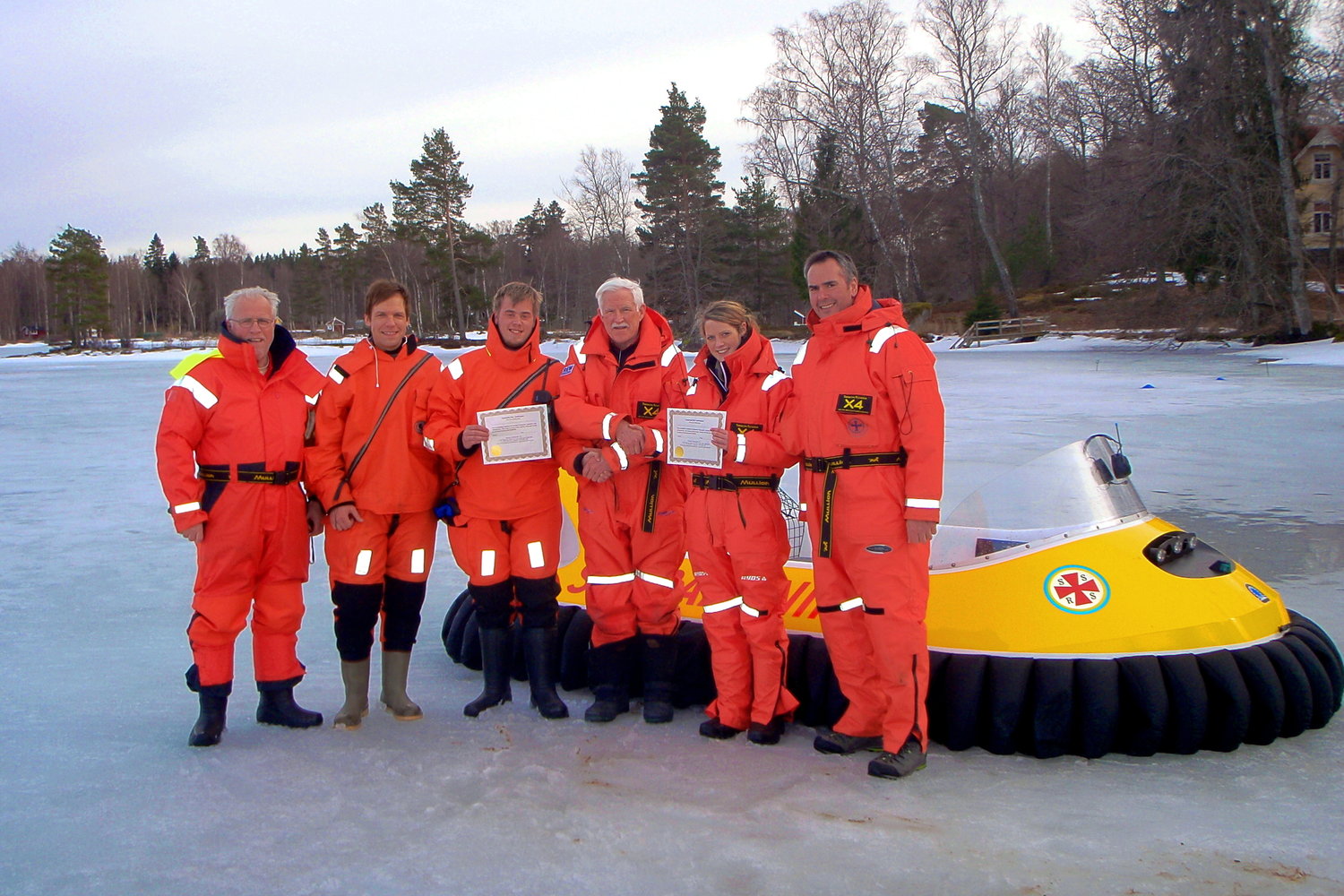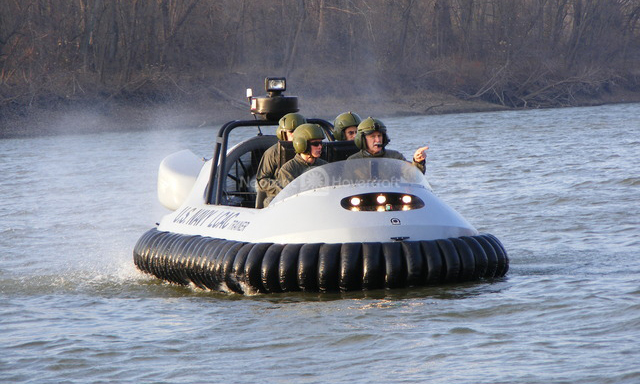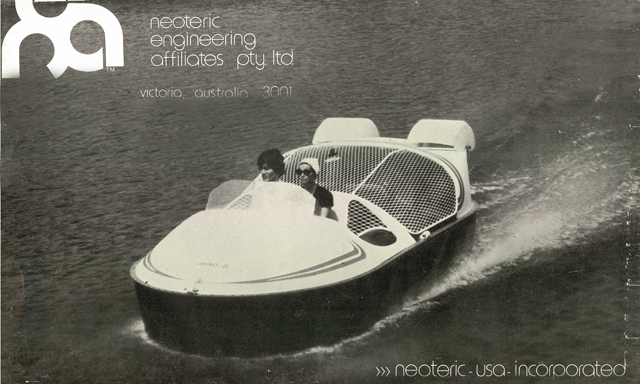Hovercraft Training Centers

TRENT NUNEMAKER
Firefighter, USA
Rescue Hovercraft Pilot
“Training is the key. It isn’t worth the risk to both personnel and equipment to operate this very versatile platform without proper training.”
“In the hands of a well-trained pilot, hovercraft can quickly and safely access almost any environment.”
From collapsing bridges to massive mudslides, Trent Nunemaker’s pilot training at Hovercraft Training Centers, and Snohomish County’s purchase of two Neoteric rescue hovercraft, have certainly proven their worth. Most recently, they played a key role in the rescue and recovery operations at the March 2014 Oso, Washington mudslide - one of the worse landslides in U.S. history, with numerous fatalities.
Nunemaker describes the aftermath: “The debris field looks as if a bomb has gone off. Try to imagine what would happen if a forest of trees hit a neighborhood at 100 mph. Everything from vehicles to homes has been completely destroyed and spread across a half mile field of debris.”
Without the hovercraft, his team’s capabilities would have been severely limited in this catastrophic event. Their hovercraft have given them the ability to cover a wider area in less time – and with less danger to themselves. “We used to use inflatables on rope systems,” Nunemaker says. “We switched to hovercraft because in a flood environment there is so much stuff you can’t see under the water – fridges, chairs, mattresses, as well as fences, thistle, debris. If we were in a boat with a prop we’d get tangled up. Inflatables would just get stuck. Being able to stay on top of the water is really key.”
In his operations at the mudslide, their hovercraft’s ability to keep Nunemaker’s team above the water – rather than in it – has been critically important. Besides hard debris and logs, the mud and floodwaters are saturated with sewage and toxic chemicals; when first responders leave the site, they must be hosed down by hazardous materials crews.

A Snohomish County hovercraft soars through debris-strewn floodwater at the Oso, Washington mudslide. “Our hovercraft can navigate through debris and logs, so we’re able to cross the flooded valley to access the debris field,” says Nunemaker. See more photos…

In 2013, Nunemaker’s team and their two hovercraft were called to action when an Interstate 5 bridge collapsed, plunging vehicles and their passengers into the Skagit River. See more photos…
Nunemaker credits Hovercraft Training Centers with providing the tools his team needs to get the most out of their rescue hovercraft. “In the hands of a well-trained pilot, hovercraft can quickly and safely access almost any environment,” he says. Their training was certainly reflected in the way his team easily adapted to the dire conditions they encountered at the Washington mudslide. “Much of the debris contains nails and other sharp building hardware, which tend to catch on the skirts of the hovercraft,” he explains. “We’ve overcome this by hovering low in the water and pushing such debris aside with the fiberglass body of the craft.”
Day by day, his team constantly grows even more confident that their hovercraft are nothing less than the perfect tools for the job. “They allow us to access any part of the river in our district within minutes. And it doesn’t matter what the conditions are. We operate them in spring floods and in the summer when the water is barely three feet deep. When the river is low, it’s hard to get a boat or anything with a big hull down there. We take them into some pretty rough waters; I’m still amazed at how reactive and stable they are in rough waters.”
But he is emphatic that none of this would be possible without proper training. “Training is the key. It isn’t worth the risk to both personnel and equipment to operate this very versatile platform without proper training. As far as the techniques we use, I don’t know if I would have been able to come up with them on my own. Like the 180. We use that maneuver when we’re coming down the river so we can tuck down inside log jams rather than making a wide sweep.”
Nunemaker appreciates the maintenance education portion of his team’s HTC training for allowing them to keep their hovercraft running at optimal capacity in-house, without having to contract outside mechanical help. “New pilots can be very hard on the equipment – and possibly destructive for the hovercraft – unless you have skill-based training. We based our maintenance protocol on the Hovercraft Training Centers checklist,” he says. “The maintenance training was very important – learning the engine properties, how to clean the air filters, checking and learning how to read the spark plugs, how to repair ripped skirts. Learning the basic maintenance helped us go further.”
In maintenance and in rescue operations, Nunemaker and his team are steadily moving forward. “We’re constantly coming up with new uses for our hovercraft,” he says. “Recently we’ve worked on techniques to lower our craft by ropes down steep embankments. This has proven to be very successful and allows us to take advantage of more launch sites.”
His overall conclusion about the value of his hovercraft and his team’s training? “Our hovercraft have become a critical tool in our swiftwater rescue team’s operations.” Nunemaker says. “Every second counts when it comes to water emergencies and the hovercraft allow us to access all our district’s waterways quickly and safely.”
All along the Squamish River in Snohomish, Washington – from the low, flat plains of Puget Sound to the rough waters at the foothills of the Cascade Range – Trent Nunemaker’s swiftwater rescue team and their Neoteric rescue hovercraft illustrate how the right rescue equipment, and proper training, protect the public and the first responders who serve them.



